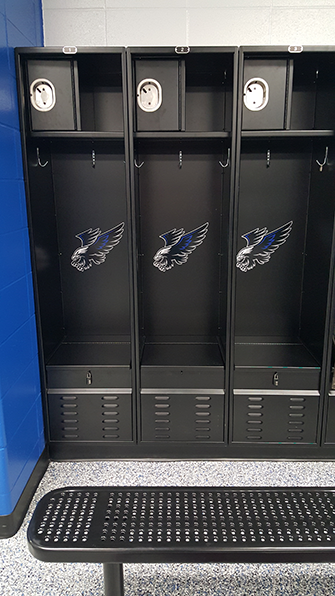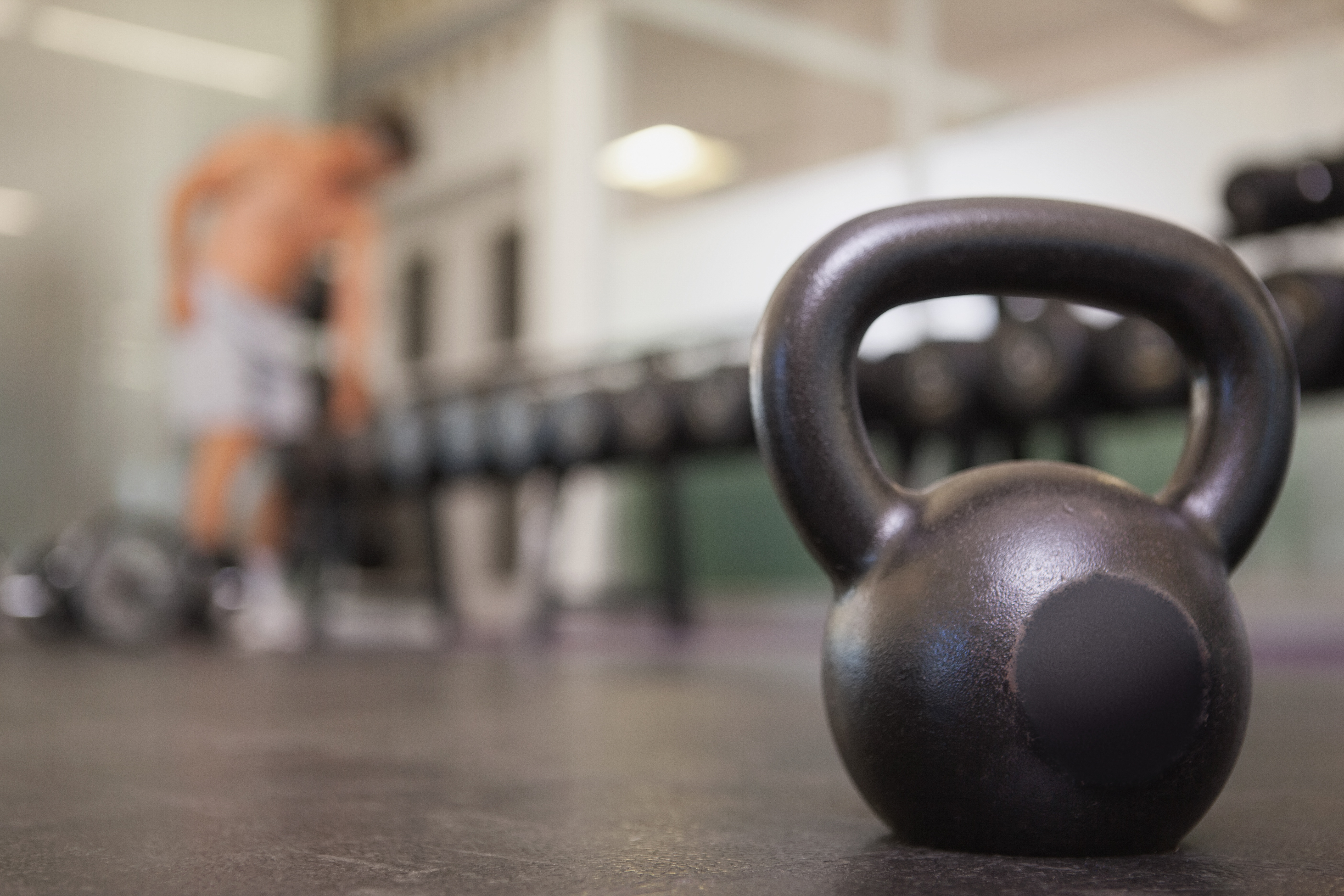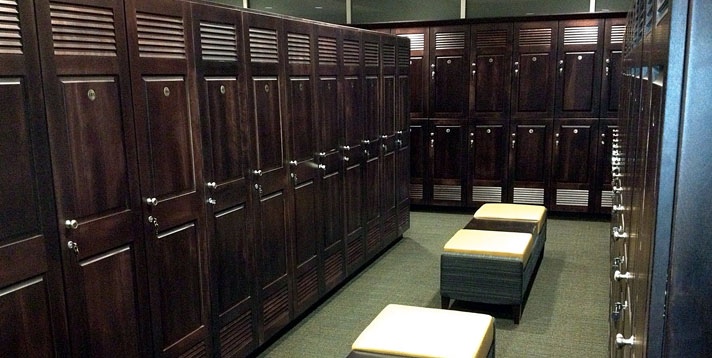Locker Room Trends
Whether you run a community recreation center, clubhouse or professional athletic facility, you have one issue in common: How do you get the most out of your locker rooms? There are so many factors: Should you choose wood/laminate, club or metal lockers? What about branding and finishes? What are the latest trends? Recreation Management magazine answers these questions and more in a recent article that covers everything you need to know about today's locker rooms.
The quintessential locker room has evolved from a simple, no-frills changing area into nearly a spa-like environment for relaxing and unwinding after a tough workout—with whirlpools, saunas, technological capabilities and other handy amenities at your fingertips.
"Locker rooms can be more than just a place to change from your work clothes to your workout clothes, and many owners are capitalizing on that. It's one of the most expensive places to build within a facility, so it needs to be done right," said Robert McDonald, a senior principal with Ohlson Lavoie Collaborative, an international architecture firm based in Denver. "We're seeing features such as lounges, televisions, grooming stations and personal care products being provided as a way to entice the members to use the locker rooms to their full capability."
Locker room design in recreation facilities, fitness centers, as well as colleges and universities continue to make advancements, incorporating the latest and greatest features to offer a place of comfort and relaxation to patrons.
Special Requirements in Recreation Centers
As recreation centers continue to evolve functionally and aesthetically so, too, have locker rooms.
"Architects often look at locker facilities that were designed in the '70s and '80s and wonder how anyone could ever design such spaces," said Reed Voorhees, AIA, LEED AP, vice president of Cannon Design, a full-service architecture, engineering and interior design firm that specializes in healthcare, education and corporate commercial facilities.
"Greater attention is being given to the quality of locker, toilet and shower rooms as users (ranging from the general public to college students and varsity athletes) continue to demand nicer facilities, and operators become more aware of improving the user's experience in all aspects of facility planning and design," he said.
With the demand for nicer facilities come different needs in locker rooms as well, depending on the type of facility you're dealing with.
For example, "For locker rooms that serve both a gym/fitness center as well as a pool, it's wise to separate wet vs. dry areas in the locker room," said Dave Larson, AIA, senior vice president and director of design, TMP Architecture Inc., Bloomfield Hills, Mich. "Although square footage is often at a premium, this separation for pool guests allows gymnasium users to set down bags on a dry floor or bench, while the pool patrons use the wet portion of the locker room with different flooring and waterproof finishes."
For example, the new L.A. Fitness Signature Club in Birmingham, Mich., has an area before the main entry to the locker rooms for drying off. This minimizes wet floors and benches in the locker area.
For indoor aquatics, "the environment is always wet, so the finishes have to be durable and easily cleanable, and stand up to cleaning agents," said Stephen Springs, principal, AIA, LEED AP, Brinkley Sargent Architects, a Dallas-based company that specializes in public architecture. "You don't want to use metal lockers. They will rust and be awful. Plastic or phenolic plastic are corrosion-proof. The difference between the two is cost. Plastic is cheaper. Phenolic is more expensive. Both are resistant to corrosion. With plastic lockers you have less choice in colors, too. Phenolics have more choice in color and finish," he said.
Meanwhile, stand-alone, municipal outdoor aquatic facilities often have very modest locker room facilities, if any.
"A small number of lockers are sometimes provided within a bathhouse, but because patrons generally keep their belongings with them, facility operators generally prefer to have only a small number of lockers accessible from the pool deck for storage of valuables," Voorhees said.
"In addition to the required toilets and showers, it is beneficial to provide patrons with a number of changing rooms inside the bathhouse. For locker rooms serving indoor or outdoor pools, it is important to provide ample floor drains throughout for ease of cleaning and to prevent any possibility of standing water on the floors," Voorhees said. "Phenolic lockers are also more suitable in 'wet' locker rooms as the material is much more capable of withstanding the wet environment. Be careful to avoid cheaper grade phenolic products that qualify their resistance to damp environments."
Amenities for Athletes
When it comes to top-tier athletic facilities, they are setting new standards for plush, amenity-packed locker rooms for varsity athletes.
"As with other amenities, lockers rooms and practice facilities have become a marketing bonanza for attracting new recruits," Voorhees said. "Special lighting, casual seating, refrigerators, graphics and technology are now entering into the realm of locker and locker room design. With all locker room, toilet and shower facilities, safety and durability are of the utmost importance in laying out spaces and selecting materials. Proper design of mechanical systems is critical to providing comfortable odor-free spaces.
"Aside from athletic facilities, the new normal for showers is to provide individual showers with a small changing space," Voorhees added. "Accessibility is paramount, and must be considered as hair dryers, mirrors and other amenities are included."
And, traditionally lower-end venues are experiencing a trend toward higher-end design.
"[For] institutions like the YMCA and various municipalities, amenities provided used to be pretty bare-bones, but these facilities now recognize that nicer amenities drive memberships," McDonald said. "Patrons want and expect clean, upscale facilities that are a step above what they have at home, and the locker rooms are an integral part of that."
Fewer Lockers, Better Finishes
When it comes to the latest trends in locker room design, industry experts concur that the need for fewer lockers in new recreation centers is an ongoing trend.
In the municipal market, "We're seeing a trend where people are coming already dressed to work out. They're working out and leaving [right away]," Springs said.
Larson agreed. "There is a definite trend toward fewer lockers. People often arrive dressed to work out, then shower at home," he said. "Locker room facilities, then, can be more generous with space. Additional width and depth can accommodate larger workout bags and equipment, for example. In addition, visitors often want to stash small items and valuables without the need to enter the changing room and shower area. A dedicated area for lockers outside the main locker room can accommodate this need."
People want cubbies to put in something small, such as a purse; or, in an aquatic environment, where you can have small lockable lockers, but still be big enough for a change of shoes, wallet and phone.
"It still needs to be securable. [You can use] express lockers. A lot of people don't use the locker rooms," Springs said. "I don't think as many people are showering [after a workout]. The after-work crowd, they just go home. There is less demand for locker space. We're seeing more lockers out in the areas of use, instead of the restroom, changing room area."
Voorhees added that the level of demand for lockers can vary widely depending on the type of facility and local weather conditions, too.
"Overall, we have seen the demand for lockers decline as more and more patrons arrive in workout clothes and then leave to shower at home after a workout. The same is true on most college campuses, where students prefer the privacy and convenience of their own dorm room. This is more common with new facilities where there are no predetermined expectations," he said.
In the case of a renovation or addition to an existing facility, it can be difficult to modify the current expectations of dedicated and paying members.
"Many of our clients have extensive locker rental programs and generally wish to maintain the number of rentable lockers," Voorhees said.
But, having fewer lockers can allow for more room in other areas of a recreation center for additional amenities.
"With 500 square feet, you could put that into cardio and get a return on your investment … a half dozen more treadmills," Springs suggested.
At the same time, though, you don't want to get skimpy on lockers. Centers can lose money if their locker rooms are dingy and smell like a locker room.
"You can lose business on a bad one," Springs said. "You have to improve dramatically the quality of locker rooms, the quality level of the space."
Springs noted an example of a client project, an active adult center, which allowed for a more expensive locker room.
"You can spend money on finishes and not make as much money making it bullet-proof … [you can have] more wood finishes, beautiful lighting, carpet, things you wouldn't see in a typical recreation center," he said. "[And] showers, we're seeing individual showers becoming bigger and nicer. In the old days, on the men's side, the shower facility was always a gang shower. Over time, we saw that disappear on the women's side. We're seeing that gender difference."
Even as fewer lockers are being built, there definitely is a heightened awareness of privacy concerns in locker rooms.
"Safety and security of personal items is still a huge concern," McDonald said. "We are seeing some locker room dollars being shifted from allocation for inside the locker rooms to outside the locker rooms. In the fitness areas, group exercise rooms, pool decks—whatever people are targeting as a destination in a facility—we are placing smaller lockers there. They don't have to be as large, just enough to hold a backpack, purse, cell phone, keys, etc. These express lockers are getting a lot of use and are very popular."
And, whether it is in a traditional men's or women's locker room or the family/assisted changing rooms, the need for private dry and wet changing areas is escalating, too.
"The advent of the mobile phone with photo technology where an image can be surreptitiously captured and immediately transmitted has changed the way we view the realities of dressing and undressing in a fitness setting," McDonald added.
Technologically Efficient
Along with the other bells and whistles in locker rooms today is the inclusion of more technology.
"This has evolved to be more than just flat-screen monitors with daily schedules of events. People are checking their e-mails and getting work done in locker rooms, and technology is now in place to support that activity," Larson said.
And, "For colder climates, radiant floor heating is now almost a given in locker rooms. This type of system provides warmth under foot for often-barefoot patrons," he added.
Meanwhile, other technologically advanced features include saunas, steam rooms and whirlpools (hot and cold) that are popular within gender-specific locker rooms; fixtures such as swimsuit water extractors and plastic bags for your suit; digital scales; and video displays of group exercise class schedules and other events happening at the facility, McDonald noted.
As technology improves, though, there exists a growing interest in the use of mechanical digital locks for locker room doors, allowing operators to have a more effective way to control and secure lockers.
"The sleek appearance and improved ease of managing lockers with these devices is enough for many to justify the price tag, which can be close to $100 per door," Voorhees said.
Twenty years ago it was common to see phenolic lockers at four to five times the cost of standard metal lockers. Today, the cost to purchase and install phenolic lockers is closer to 25 to 30 percent more than good quality metal lockers. As a result, there is greater demand for phenolic lockers.
"The material is extremely durable, able to withstand the wettest environments, provides greater choices for color and finish, comes in a wider array of configurations, and allows for a more finished appearance when detailed properly," Voorhees said.
For higher-end users in private clubs and even some athletic team rooms, "We have seen a growing demand for added features from custom graphics to iPads built into the face of the lockers, allowing athletes to keep track of their schedules.
Some colleges and universities have special club locker rooms equipped with a TV lounge and other material comforts. For example, TMP Architecture worked together with Denver-based architectural firm Sink Combs Dethlefs to design the University of Michigan Basketball Player Development Center's locker rooms, which are equipped with removable, mounted iPads on each player's locker.
"College and university recreation facilities aren't just for the 'jocks' anymore," Larson said. "They are now seen as valuable campus community centers, and the locker rooms are beginning to reflect that. New locker rooms contain more 'creature comforts,' and are becoming more like a private club's facilities."
Students on today's college campuses are focused on individuality and seek amenities and features that cater to their individual experiences and personal needs.
"Participants continue to respond positively to spaces that use more sophisticated materials and colors that feel less institutional," Voorhees said. "Facility operators are increasingly requesting their locker rooms have a greater aesthetic appeal while still meeting the long-term life-cycle costs of enduring materials. The push to incorporate sustainable goals has driven architects and facility operators to consider products that consume less energy."
To boot, a wider selection of interior finish materials is available that are often seen in high-end private clubs, such as translucent glass locker doors, which can completely change the look and feel of a traditional locker room.
And, "As required by the Affordable Care Act, we are now including lactation rooms in our recreation centers," Voorhees added. "These can be placed just inside the women's locker room, or even adjacent to the locker room with a separate entry. We believe these spaces will evolve quickly as we gain an understanding of available products, equipment and the needs of nursing mothers."
Family Changing Rooms
From the time when family changing rooms became popular about 15 years ago, they now have become almost expected as part of a recreation center's essential amenities—an alternative to men's and women's locker rooms.
"People wait in line to get a family changing room, rather than a regular changing room," Springs said. "There's more demand for family changing areas. [With the] last few centers, we've done multiple changing rooms. That can get into a lot of footage."
Voorhees noted that family changing rooms have become commonplace in almost all of his company's facilities, regardless of whether it is a municipal, higher education or private facility.
They are a way for parents and their children to have their own space, and were created to accommodate families who need a more private place—separate from the men's and women's locker rooms--to assist their children in changing their clothes.
"On most college campuses, we are regularly being asked to provide separate 'gender inclusive' locker/shower rooms to serve the LGBTQ community as these diverse groups gain a stronger voice in the planning of new campus facilities," Voorhees said. "Similar to a traditional family change room, they can vary greatly in size from a private single toilet/shower room, to an area with multiple toilet/shower rooms or a larger shared area with multiple toilet/shower rooms off of a communal locker area."
But, there are expectations for family changing rooms in recreation facilities.
"These rooms can not only serve families with young children, but can also accommodate those with cultural and religious beliefs related to privacy," Larson said. "These rooms—sometimes with locks and private showers—are often essential, and for some, can allow visits to rec facilities that couldn't otherwise occur. Owners need to commit to additional maintenance and operational costs for these rooms—shower curtain replacements, and additional nooks and crannies to clean and maintain—but most agree that they have become necessary components."
Necessary, too, in that they are also used for assisted changing of the physically challenged.
"We are seeing a lot of partnerships with aquatic therapy providers who attend to these individuals," McDonald added, "in which case an assisted changing area must be located immediately adjacent to the therapy pool."




.webp)


